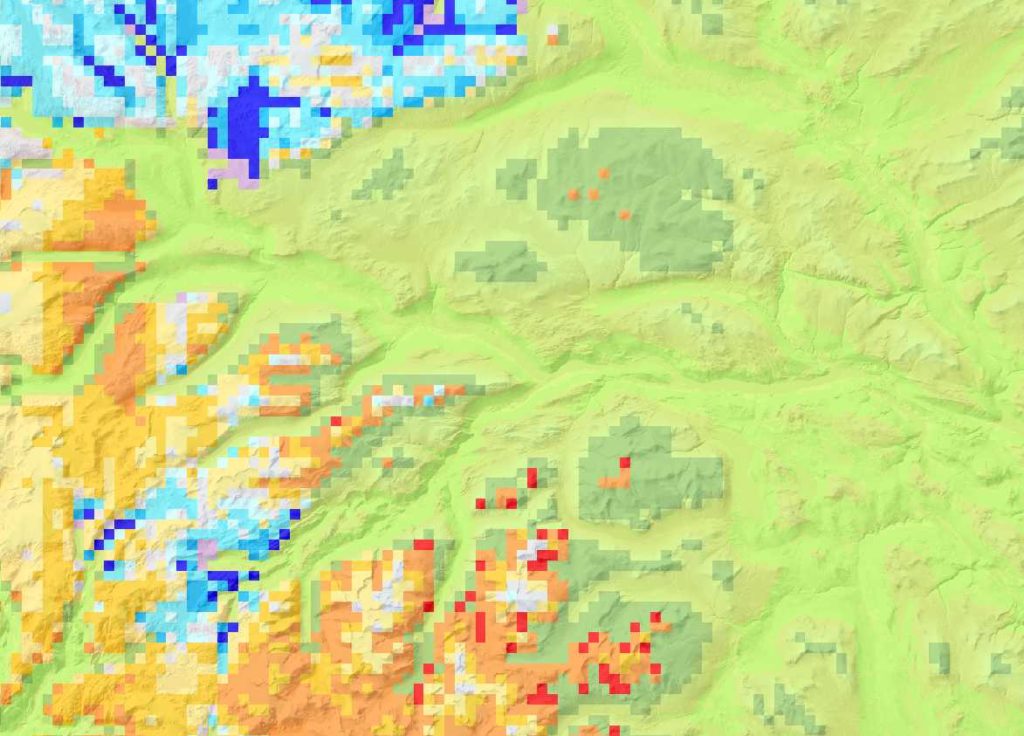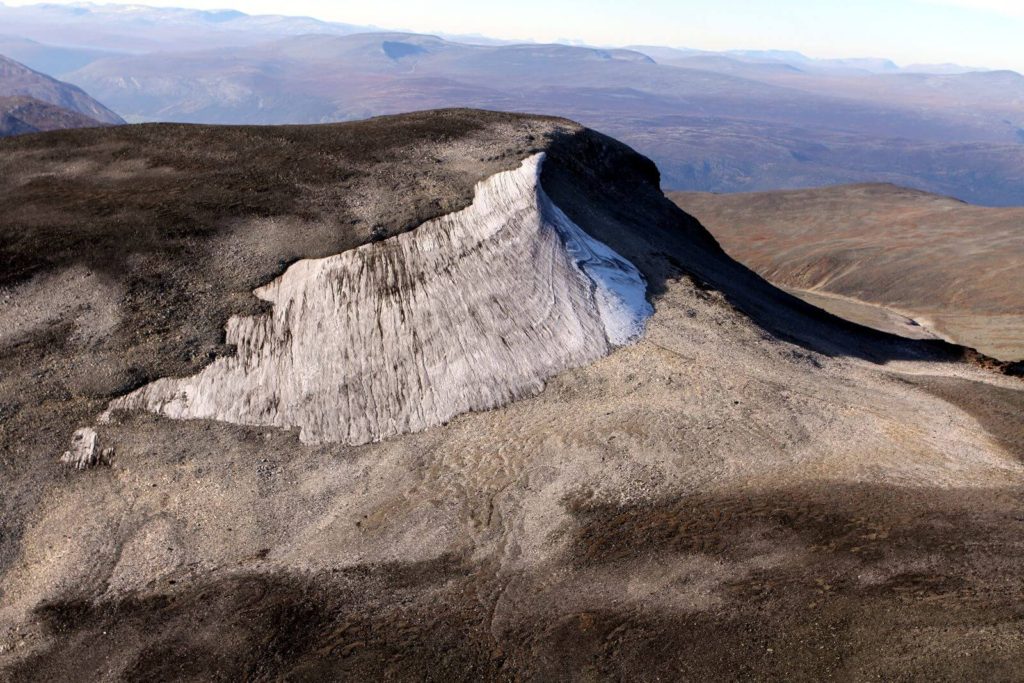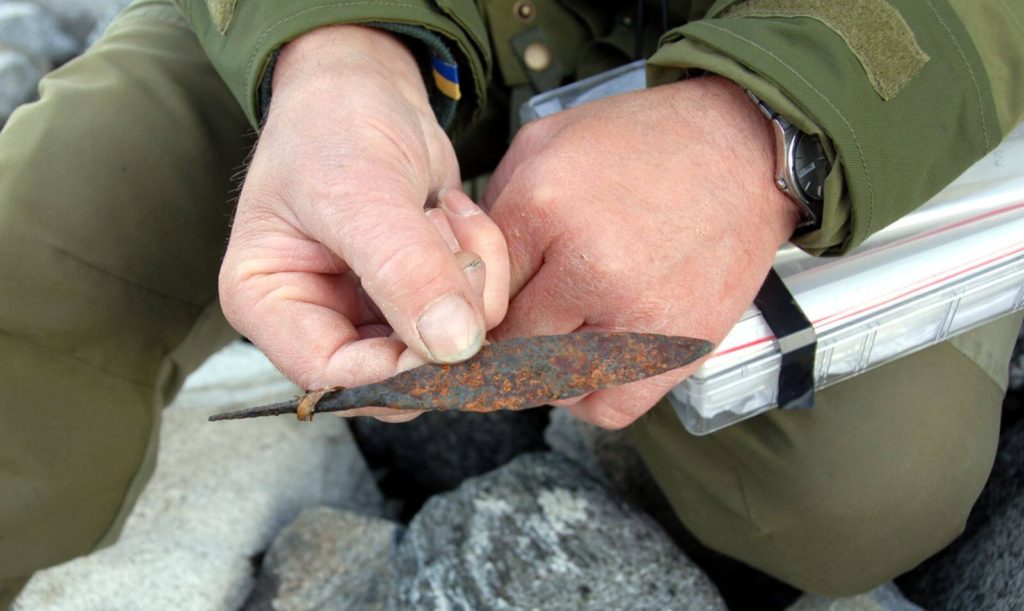Snow situation
The most difficult part of fieldwork planning is getting reliable information on the snow conditions prior to fieldwork. With a limited time window available for survey in the high mountains, it is of paramount importance that we target the right sites at the right time. Without information on snow conditions, we could end up surveying sites with heavy snow cover, while sites with melting ice could be missed. We rely on a combination of remote sensing and ground intelligence for information on the snow situation.
The first issue to consider is always the situation at the end of the melting season the previous year. We had a major melt in 2014, exposing a lot of old ice. The year 2015 brought excess snow, most of which melted away during 2016 in the eastern part of our survey area. By the time the winter snow started falling last year, much of the old ice only had a thin cover of the 2015 excess snow left.
This winter has brought a lot of snow in the western and northern part of our survey area, but less than normal in the east. At the outset, this suggests that prioritizing the eastern areas could be a good idea. These are also the areas, where we have seen most melting in the last years.

Ultimately, the summer weather decides how serious the melting will be. The melt started two weeks early this year, compared to the 1981-2010 normal. If we get a normal summer, there is bound to be melting of old ice in the eastern part of our survey area. How serious the melting will be depends on temperature, wind strength and direction, precipitation, humidity and other factors (read about how the ice melts here)
Choosing targets
Therefore, when choosing targets, we look for sites, which need surveying, and are situated in areas with little snow. We will normally do two or three new sites pr. field-season (snow conditions permitting), plus monitoring on previously surveyed sites, if there is melting of old ice.
One area in particular appears to have relatively little snow this year. In this area, we have our secret arrow site, and two other large sites. One of these two sites has only seen very limited fieldwork, but has yielded seven arrows so far, dating from 1000 BC to the Early Medieval Period. The site also contains scaring sticks and a high number of hunting blinds, including some rather elaborate structures. This site will be target no. 1 this year, probably in mid-August. We will have a team of eight or nine people, including volunteers.

A little to the west is another large site with the same types of finds. This will be target no. 2. This site has yielded three arrows and a number of scaring sticks previously. It is close to one of the largest collections of hunting blinds in our county. Team size here will also be eight or nine people, including volunteers.

The wild-card this year, so to speak, is a lost trail through the heart of the Jotunheimen Mountains. This route is believed to cross a large glacier, and is potentially very interesting, but there is no ground intelligence on finds here so far, only vague information on the presence of house ruins on either side of the glacier. We plan to use a smaller team for this fieldwork. If we get early snow on targets 1 and 2, we can redirect fieldwork to the route as it is mostly situated at lower altitude than the other sites.
Pre-season work
In the run-up to the field season, each of the three chosen targets will be visited. We need to find good sites for our basecamps as close to the ice as possible, including lower altitude backup campsites in case of bad weather. A good campsite should have level ground, easy access to water and preferably some shelter from the wind. Information on the availability of cellphone coverage on different parts of the sites is also important, mainly for safety reasons.

Before the fieldwork, we check all our equipment, and update and repair it, when there is need. This is tedious, but important work. Once you are on the site, it is too late to discover faulty equipment.
We also need to obtain permissions for our fieldwork, both from the landowners and the national park authorities, where this applies.
Flexibility is the key
The field plan is subject to change, depending on melting conditions. If we get heavy melting, we will re-prioritize and spend our time monitoring sites that have already seen systematic survey. On several of the previously surveyed sites, the ice has melted back to Stone Age Levels. We really need to be there if the ice melts even further back. As we say: “This is when the goodies come out”.
If we get a cool summer and little melting, fieldwork may be scaled back. We may also experience problematic weather, which could lead to rescheduling of fieldwork. This flexible approach is a vital part of planning for glacial archaeology fieldwork.
The waiting
Waiting for the developing of the melting conditions during the summer has always been a two-sided story. On the one hand, we would really like to discover exciting finds melting out of the ice. On the other hand, the continued melting of the high mountain ice sends a dark message about climate change. Therefore, if there is no melting and few finds, we can console ourselves with the hope of keeping the ice a little longer.
We will know the result of the summer melt in two months.
